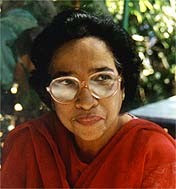


The Coventry Cathedral in England rose like a phoenix from the ruins of the bombed out St. Michael’s Church. In 1940, the Luftwaffe in its ‘Operation Moonlight Sonata,’ reduced to rubble the City of Coventry. The Germans reckoned without the faith and resilience of the people, who on the very next day decided that they would rebuild the Cathedral. Though it took fifteen years for this to happen, the Cathedral today stands proudly as a magnificent modern ‘theatre of worship.’
Beside it stand the ruins of the old church, open to the skies and still considered consecrated ground. Its tower and spire 295 feet high, loom into the skies. The Altar of Reconciliation holds pride of place, but there are many other plaques engraved on the walls. The words “Father Forgive” inscribed on the partially burnt out cross, spell the ethos of the Christian Church.
Most people fail to notice the remnants of very old buildings at the entrance to the Visitors’ Centre. These are the ruins of the earliest church in Coventry, which was dedicated to St. Mary. It was founded as a Benedictine Nunnery by Leofric, Earl of Mercia and his wife Godiva in 1043. With the dissolution of monasteries in 1539, the building fell into decay.
Most of us remember Lady Godiva because of the legend associated with her name. Some women strip for a living; some do it for a lark. Some do it for publicity, but the lovely lady of Coventry did it for a worthy cause. In the 11th century, her husband Leofric levied crippling taxes on the people of Coventry. This saintly woman pleaded with her husband to remit his orders. He agreed to do it on one condition – that she ride naked through the streets of Coventry. A decree was sent out to the people to stay indoors during this time, and bolt their windows and doors. But a tailor who was later called ‘Peeping Tom’ couldn’t contain his curiosity. He drilled a hole in his door to catch a glimpse of the naked lady, but was immediately struck blind.
One wonders why a godly man like Leofric wanted to humiliate his wife. Was it a form of sexual sadism? Or did he want to test whether she was genuinely concerned about her subjects? Her readiness to take up the challenge must have convinced him of her sincerity, and the taxes were promptly withdrawn.
The people of Coventry did not forget the goodness of Godiva. She has been immortalized in black marble. Her naked statue astride a horse, covered only by her cascading hair, stands under a canopy at the Cathedral’s Lane Shopping Centre.
Godiva lived between 997 – 1067 A.D. She was a widow when Leofric married her. Both of them were benefactors of religious houses. After Leofric’s death she was the only woman in England with such major land holdings.
A commemoration of Godiva’s legendary ride was instituted on May 31st 1678, and continued till 1960. But in 1980 after a gap of twenty years, a Coventry resident called Pru Porretta took on the role of present day Godiva. She leads a procession through town on Godiva’s birthday, which culminates in a celebration at the Cathedral ruins. Her aim is to bring various ethnic, cultural and religious communities together, through music, dance and story telling. Her band of helpers, are known as the Godiva Sisters.
Pru breathes the spirit of Godiva. She works with schools and communities, and brings the story of Godiva to life. Her conducted tours through the city are interesting and informative. And for those who would like to explore the darker side of Coventry, she conducts ghost tours too.








